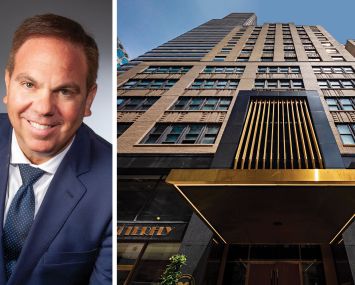Miami Real Estate Veteran Michael Comras: 5 Questions
By Jeff Ostrowski April 4, 2025 2:25 pm
reprints
Michael Comras, a veteran of South Florida’s commercial real estate sector, has handled leasing or development at a number of iconic locations in Miami-Dade County.
Comras brought Apple, Nike and The Gap to Miami Beach’s Lincoln Road. He co-developed CocoWalk in Coconut Grove. And his firm negotiated 250,000 square feet of retail leases at Miami Worldcenter.
The following conversation has been edited for length and clarity.
Commercial Observer: Lincoln Road has experienced headline-grabbing ups and downs in recent years. What’s your assessment of the health of the pedestrian mall?
Michael Comras: After the retail apocalypse and COVID, most markets have fully restored and excelled. Lincoln Road was one of the last markets to come back. What happened to Lincoln Road is no different from what happened around the country: Tenants who wanted flagship stores of 15,0000 square feet now want flagship stores of 1,500 square feet. But I see Lincoln Road coming back – all these new tenants are coming in.
And the city has now paused a project that put almost a moratorium on outdoor dining. Since that went away, five new restaurants have signed leases. People like to see people. People will gravitate to where they see people. That’s what we’re seeing again on Lincoln Road.
Because you mentioned the retail apocalypse, I have to ask: Are you using that phrase with your tongue in cheek?
The apocalypse is a thing of the past, just like COVID is a thing of the past. There’s really no space available. If big-box spaces go empty, those spaces get picked up in a minute. There’s just no overhang.
There has not been an abundance of development in the last 10 years. Five or six years ago, retail was at the bottom of the stack among commercial property types. But now, retail is really rising back up through the ranks. There hasn’t been a lot of retail built, and you have this ongoing influx of population.
Retailers like Joann Fabrics and Party City went out of business, but those were dated concepts that needed to be refreshed. Obviously, the online business has picked up. But what e-commerce has shown is that to be successful, the online retailers need to have a brick-and-mortar presence.
What sparked the redevelopment of CocoWalk?
When I would talk about going to the Grove, people would say, “Are you kidding me? Who wants to go to the Grove?” You’ve got 6,000 students who go to school there. It’s on the water. It’s at the head of Brickell. Repositioning CocoWalk and adding 100,000 square feet of office space, we’ve remade the living room of Coconut Grove.
CocoWalk was seen as the center of activation, but it never really created a sense of place for people to hang out. We tore down the whole middle pavilion and the whole east side, and we opened up a plaza. We planted a huge banyan tree. That was a significant moment — Coconut Grove is all about the green, the nature, the vibe.
I’m intrigued that you decided to add office space at a time when office is out of favor.
All markets are not created equal. In Miami, the office market is super-tight. More specifically, in Coconut Grove, you have a lot of people who live in Pinecrest or Coral Gables who drop off their kids at school, then drive another 20 minutes to Brickell, then drive into the garage, then get into the elevator and go down, then go back up in the elevator to get to their office. Then in the afternoon, they do it all over again.
It just made sense: Why don’t we put a building in the middle of Coconut Grove? That will improve quality of life for everybody. We created a boutique office building where people can live, work and play. Nobody wants to spend time in their car anymore.
What’s your biggest challenge?
Finding space for tenants who need space. The other is instability in the interest rate market. It’d be nice to have some stability. The trade wars and tariffs are bringing a little bit of instability. But we’re firing on all cylinders.
We’re looking to bring back areas that have been lagging. I always refer to Miami as a city of villages, no different from New York, and we have all these areas that are prime for redevelopment, including Little River and Little Haiti.
Jeff Ostrowski can be reached at jostrowski@commercialobserver.com.


